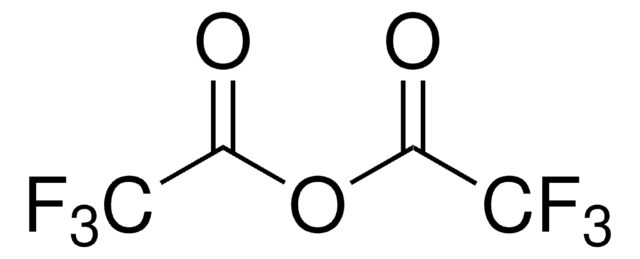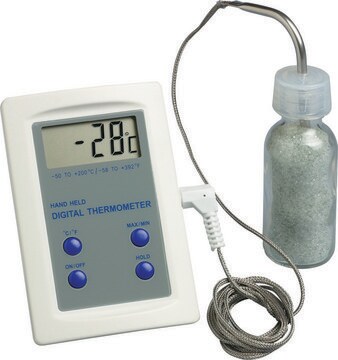91204
Acetic anhydride
for GC derivatization, LiChropur™, ≥99.0%
About This Item
Recommended Products
grade
for GC derivatization
Quality Level
vapor density
3.5 (vs air)
vapor pressure
10 mmHg ( 36 °C)
4 mmHg ( 20 °C)
Assay
≥99.0% (GC)
≥99.0%
form
liquid
autoignition temp.
629 °F
quality
LiChropur™
expl. lim.
10.3 %
reaction suitability
reagent type: derivatization reagent
reaction type: Acylations
technique(s)
gas chromatography (GC): suitable
evapn. residue
≤0.003%
refractive index
n20/D 1.390 (lit.)
bp
138-140 °C (lit.)
mp
−73 °C (lit.)
solubility
H2O: slightly soluble
density
1.08 g/mL (lit.)
SMILES string
CC(=O)OC(C)=O
InChI
1S/C4H6O3/c1-3(5)7-4(2)6/h1-2H3
InChI key
WFDIJRYMOXRFFG-UHFFFAOYSA-N
Looking for similar products? Visit Product Comparison Guide
General description
- It increases the stability of compounds by protecting unstable groups.
- It may render volatility on substances like carbohydrates or amino acids, that have several polar groups that they are non-volatile and generally decompose on heating.
- It allows the separations not possible with underivatized compounds.
- Compounds are detectable at very low levels with an ECD.
Acetic anhydride is a reagent utilized to form fragmentation-directing derivatives for GC/MS analysis.
Application
Other Notes
Legal Information
Signal Word
Danger
Hazard Statements
Precautionary Statements
Hazard Classifications
Acute Tox. 2 Inhalation - Acute Tox. 4 Oral - Eye Dam. 1 - Flam. Liq. 3 - Skin Corr. 1B
Storage Class Code
3 - Flammable liquids
WGK
WGK 1
Flash Point(F)
120.2 °F - closed cup
Flash Point(C)
49 °C - closed cup
Personal Protective Equipment
Choose from one of the most recent versions:
Already Own This Product?
Find documentation for the products that you have recently purchased in the Document Library.
Customers Also Viewed
Our team of scientists has experience in all areas of research including Life Science, Material Science, Chemical Synthesis, Chromatography, Analytical and many others.
Contact Technical Service








